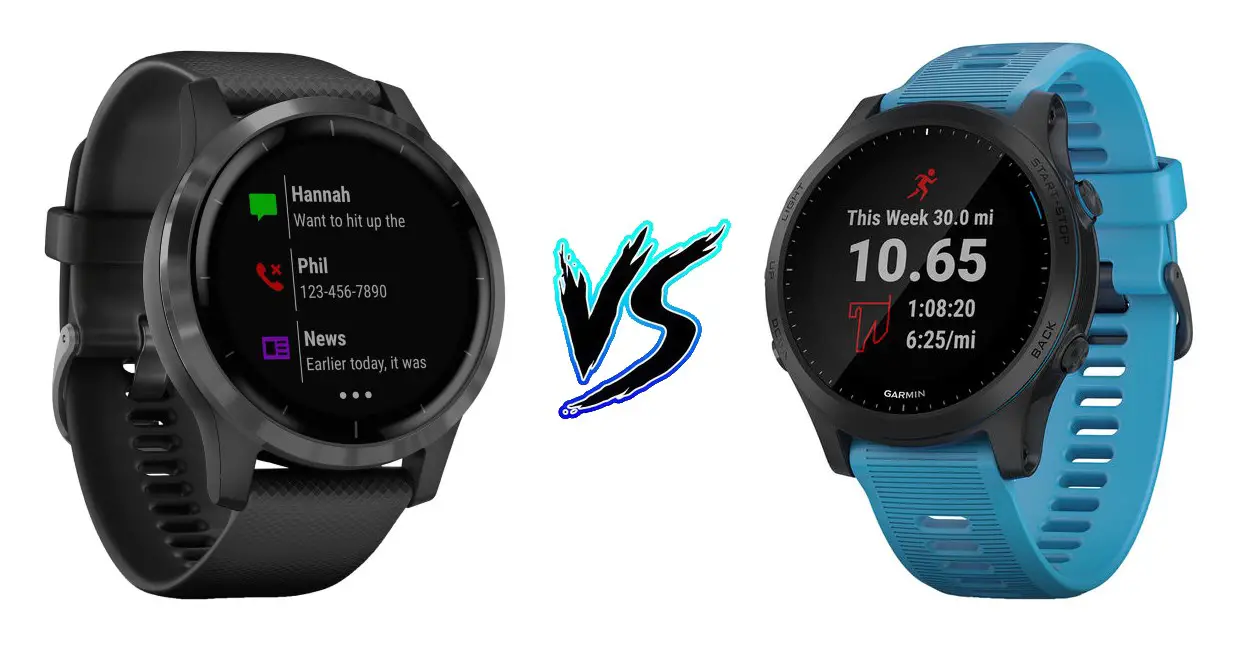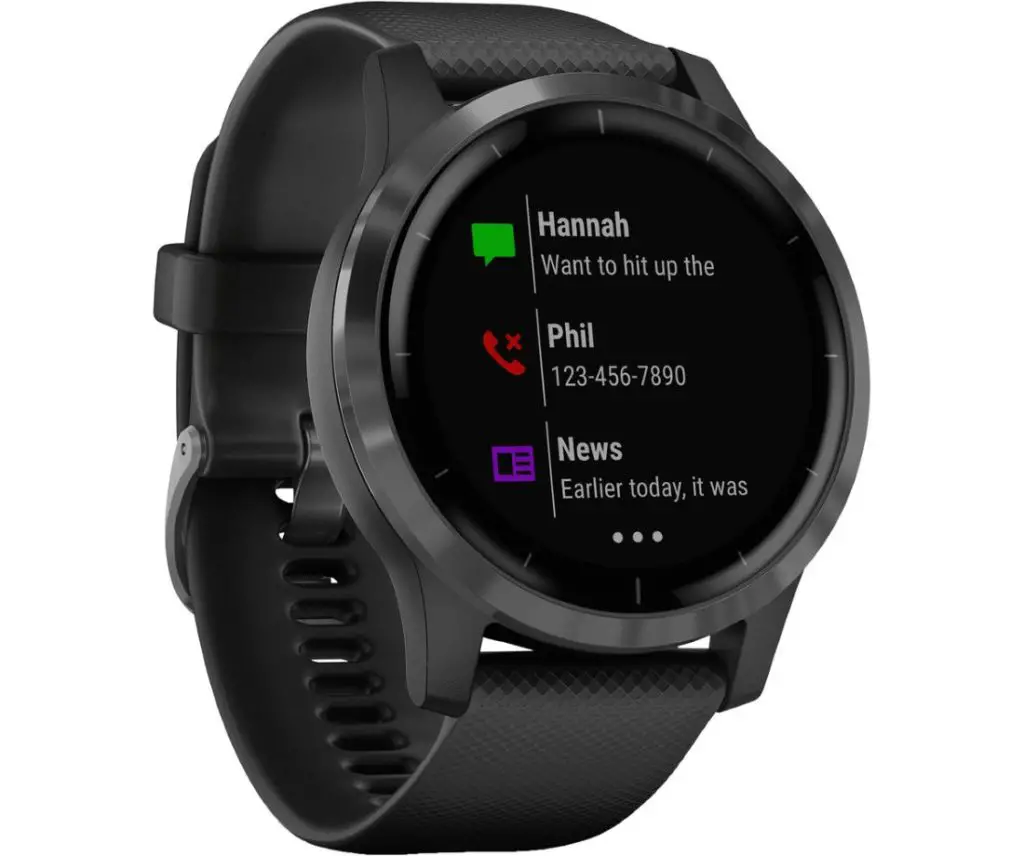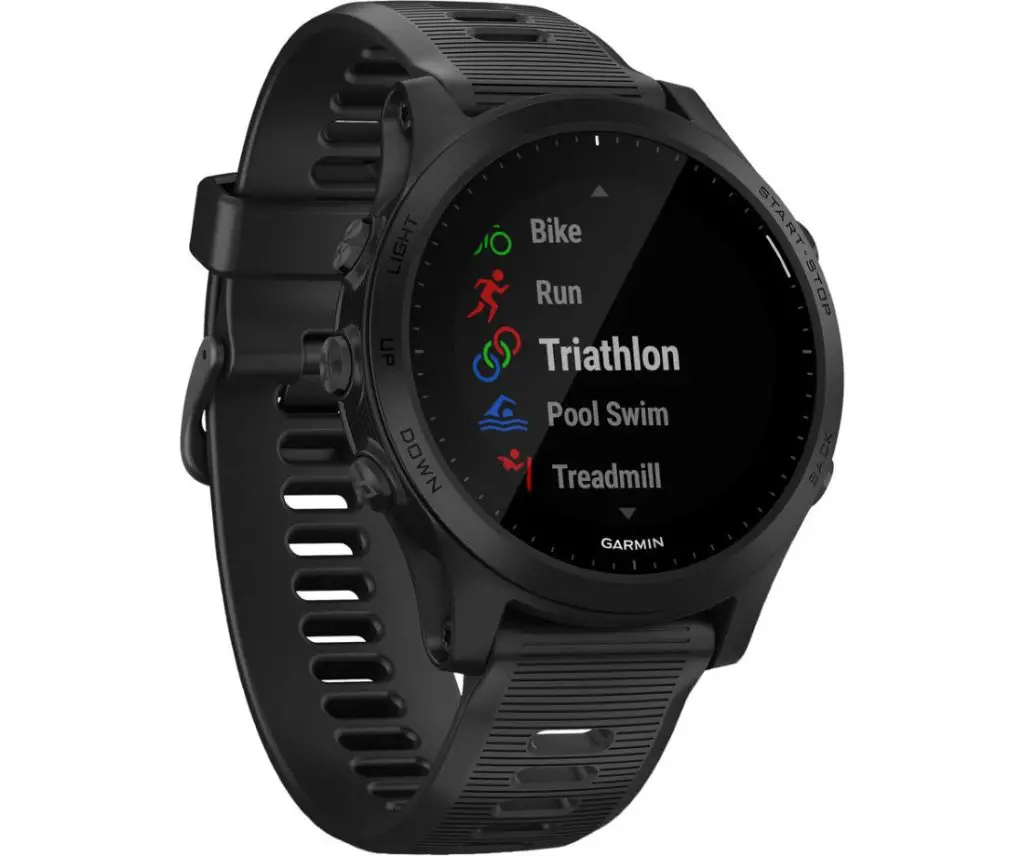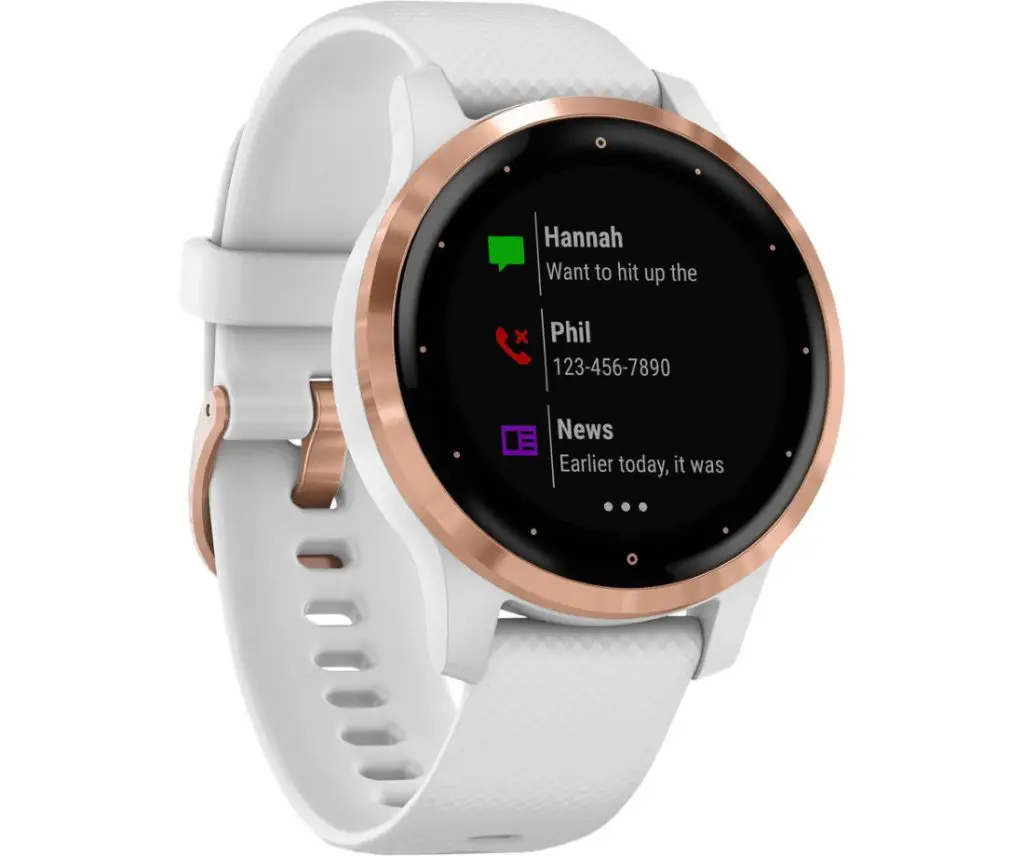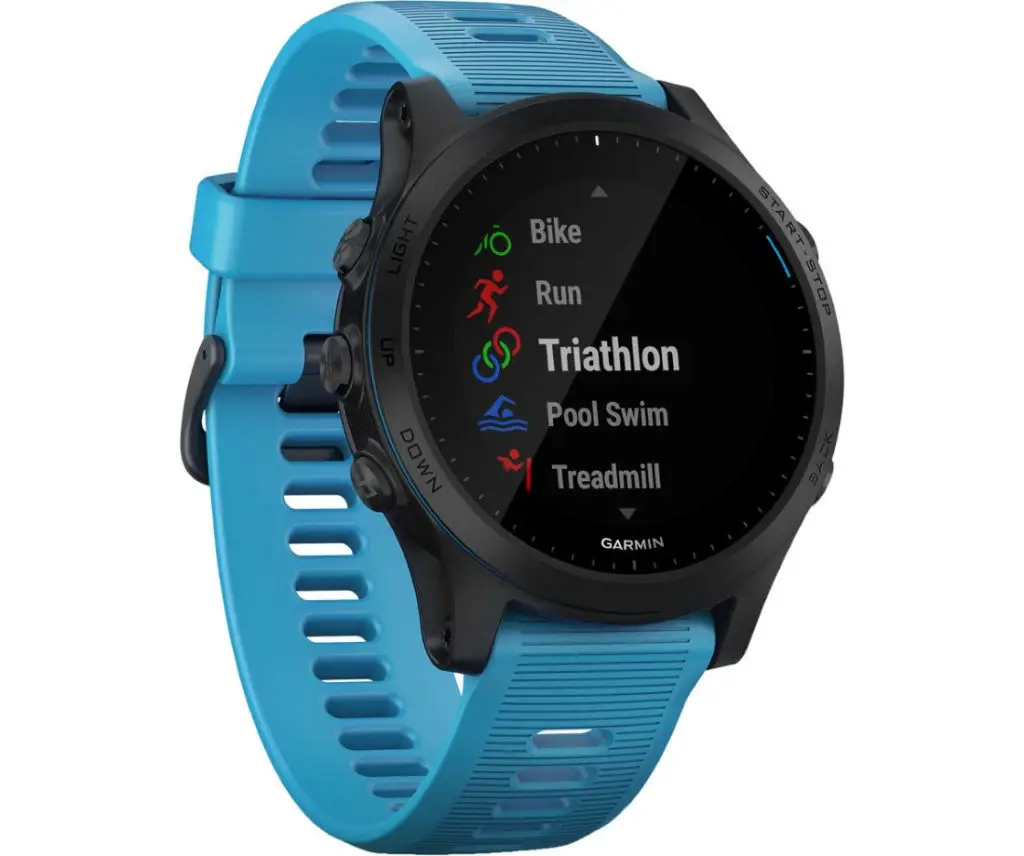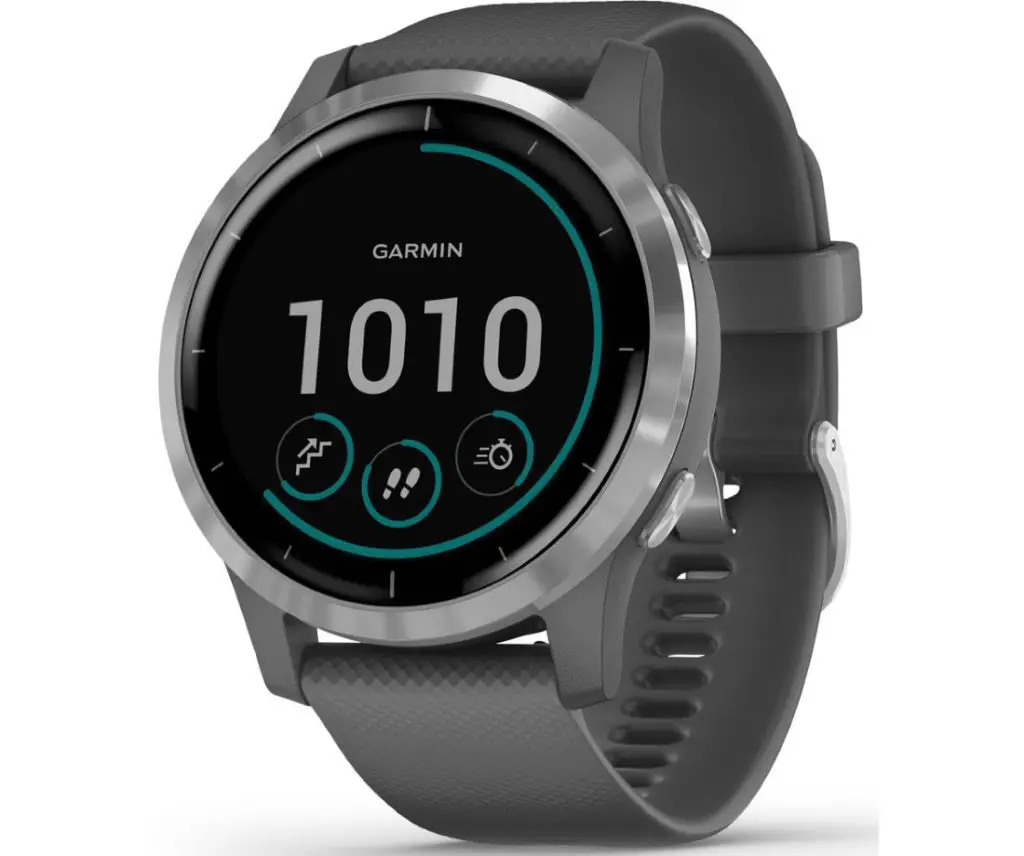This is a simple product comparison between the Garmin Vivoactive 4 vs Garmin Forerunner 945.
They are both extremely versatile GPS watches that can track a wide range of fitness activities and sports modes. However, there are some key differences that we will make super clear in this post.
To do this, we will highlight all the the key similarities and all the key differences between the two watches. We will also provide a full list of the sports modes that each watch offers, together with some buying tips to help you make the right decision.
It’s officially time to dive in.
What are the main differences between the Vivoactive 4 and the Forerunner 945?
- The Vivoactive 4 has a touchscreen, whereas the Forerunner 945 uses buttons to work the watch.
- The Forerunner 945 tracks open water swimming and it has a triathlon mode.
- The Forerunner 945 has significantly more running specific features.
- The Forerunner 945 has TOPO map navigation technology which is missing from the Vivoactive 4.
- The GPS battery life of the Forerunner 945 (36 hours) is twice as long as the GPS battery life of the Vivoactive 4 (18 Hours).
- The Vivoactive 4 is significantly cheaper than the Forerunner 945, despite having almost as many features and sports modes.
- The Forerunner 945 can track 10 extra sports/activity modes in total.
- The Vivoactive 4 offers support for guided workouts. This gives you access to visual training plans that are displayed directly on the watch.
Garmin Vivoactive 4 vs Garmin Forerunner 945 - Key Similarities
Vivoactive 4
FR945
Stryd + RunScribe
Stryd + RunScribe
Corning® Gorilla® Glass 3
Corning® Gorilla® Glass 3
Garmin Vivoactive 4 vs Garmin FR945 - Key Differences
Vivoactive 4
Forerunner 945
Less Expensive
More Expensive
50.5 g
50 g
45.1 x 45.1 x 12.8 mm
47 x 47 x 13.7 mm
Up to 500 Songs
Up to 1000 Songs
18 Hours
36 Hours
6 Hours
10 Hours
Up to 60 Hours
Up to 8 Days
Up to 14 Days
20
30
Comparison of Sports Modes
| Vivoactive 4 Sports Modes | Forerunner 945 Sports Modes |
|---|---|
| 01) Strength Training | 01) Strength Training |
| 02) Cardio Training | 02) Cardio Training |
| 03) Elliptical Training | 03) Elliptical Training |
| 04) Stair Stepping | 04) Stair Stepping |
| 05) Floor Climbing | 05) Floor Climbing |
| 06) Indoor Rowing | 06) Indoor Rowing |
| 07) Yoga | 07) Yoga |
| 08) Running | 08) Running |
| 09) Treadmill Running | 09) Treadmill Running |
| 10) Indoor Track Running | 10) Indoor Track Running |
| 11) Skiing | 11) Skiing |
| 12) Snowboarding | 12) Snowboarding |
| 13) Cross Country Skiing | 13) Cross Country Skiing |
| 14) Stand Up Paddleboarding | 14) Stand Up Paddleboarding |
| 15) Rowing | 15) Rowing |
| 16) Cycling | 16) Cycling |
| 17) Indoor Cycling | 17) Indoor Cycling |
| 18) Pool Swimming | 18) Pool Swimming |
| 19) Golf Mode | 19) Golf Mode |
| 20) Walking | 20) Walking |
| 21) Open Water Swimming | |
| 22) Triathlon Mode | |
| 23) Tactical | |
| 24) Jumpmaster | |
| 25) Kayaking | |
| 26) Mountain Biking | |
| 27) Swimming/Running | |
| 28) Climbing | |
| 29) Trail Running | |
| 30) Indoor Track Running |
Reasons To Choose The Vivoactive 4

It has a touchscreen - Vivoactive 4
This is definitely one of the biggest differences between the Vivoactive 4 and the Forerunner 945. While the FR945 relies on a button interface to interact with the watch, the Vivoactive 4 relies predominantly on the touchscreen.
In some respects, this makes the Vivoactive 4 function a bit better as a standard smartwatch. If you’re used to working with a smartphone, transitioning to a touchscreen watch is pretty seamless.
However, sports enthusiasts (especially runners) are quick to point out that a button only interface is often a bit more practical when you are actively engaged in your sport of choice.
It's a lot more affordable
This doesn’t require to much explanation. The standard price of the Vivoactive 4 is about 40% less than the standard price of the Garmin Forerunner 945.
Naturally this could be a dealbreaker for people on a tight budget. The good news is that you can’t really go wrong if you opt for the Vivoactive 4, because it is such a well rounded sports watch. The only caveat is triathletes, who should obviously opt for the Forerunner 945, given that the Vivoactive 4 doesn’t have a triathlon mode.
The Guided Workouts are a big win for fitness enthusiasts
Garmin’s guided workouts feature is pretty cool. It literally gives you access to animated cardio, strength, yoga and pilates workouts that are preloaded onto the watch. You can also download more workout routines from the Garmin connect app, if you need something more challenging or you grow tired of the pre-loaded routines.
It's a very versatile activity tracker with enough sports modes for most people
I say this, because the Vivoactive 4 really does have you covered from a sports and activity tracking perspective. Fitness enthusiasts, runners, cyclists, rowers, golfers and even snowboarders will all be well served by this watch. In fact, I would go so far as to say that it’s the most well-rounded activity tracker in the world right now.
Of course the Forerunner 945 gives you all the same core features and a whole lot more (open water swimming, triathlon mode and Topo maps to name a few), but you will pay quite a bit more to access those features.
Reasons To Choose The Forerunner 945

The FR945 is Garmin's Best Triathlon Specific Watch
From a sports perspective, the addition of open water swimming and a triathlon tracking make the Forerunner 945 significantly more attractive for endurance athletes.
Garmin have produced quite a few triathlon watches in their time. The Forerunner 945 quite literally sits at the top of their triathlon watch food chain. Of course it has some stiff competition from the Garmin Fenix 6, but there are several reasons which explain why the FR945 is actually better for triathletes, namely:
- The FR945 is lighter than the Fenix 6
- It’s cheaper than the Fenix 6
- It comes in a bundle version with 2 chest straps (HRM-Swim + HRM-Tri)
In other words, the Forerunner 945 is literally designed, specifically for the triathletes. If triathlons are your core focus, you can’t go wrong with this watch.
The GPS Battery Life Is Twice As Long
The GPS battery life of the Vivoactive 4 is pretty decent at 18 hours. However, the GPS battery life of the Forerunner 945 is literally twice as long, sitting at 36 hours.
It's The Better Watch For Runners
There are 3 main reasons why the Forerunner 945 is the better watch for serious runners.
- It supports Garmin Advanced Running Dynamics
- It supports Garmin Running Power
- It relies on buttons rather than a touchscreen to work the watch
Now, you might not be sure what Garmin Advanced Running Dynamics is all about. The bullet points below explain the 6 main stats which the Forerunner 945 supports, but the Vivoactive 4 does not.
- Ground Contact Time – The time your foot spends on the ground with each stride.
- Ground Contact Balance -Symmetry between left and right foot.
- Vertical Oscillation – degree of ‘bounce’ in your running motion.
- Vertical Ratio – the cost-benefit ratio with stride length.
- Cadence – Real time cadence stats displayed on your watch.
- Stride Length – Real time stride length stats displayed on your watch.
At this point, it needs to be mentioned that in order to unlock Garmin running power and advanced running dynamics, you need to invest in one of the following 3 accessories:
Just to be super clear, you only need 1 of these 3 accessories (rather than all 3).
TOPO Maps Technology
Typically, Garmin’s TOPO map technology is only packed into their most expensive watches. The main benefit here is that you can access 3D topographical maps, directly on your Forerunner 945.
This is great for trail running and hiking, and it’s also very useful if you’re navigating unfamiliar streets. In a way, it’s a bit like having Garmin’s car navigation technology packed into a watch that humans can use to navigate pretty much any terrain on foot (or a bicycle).
Bigger Music Storage Capacity
This one is pretty simple. The Forerunner 945 can store about twice as much music as the Vivoactive 4.
- Vivoactive 4 music storage – Up to 500 songs
- Forerunner 945 music storage – Up to 1000 songs
Garmin PacePro & Garmin ClimbPro
Garmin ClimbPro gives you a better understanding of all the upcoming climbs along your training route (when running our cycling outdoors). It detects all the climbs, and makes all the important information available to you as you approach it. This includes:
- Distance remaining in the climb
- Ascent remaining in the climb
- A chart with a profile of the climb
- Average gradient for the climb
Garmin’s PacePro technology is designed to help you achieve your target time during training and races. It’s a bit like having a pacemaker built into your watch, for the entirety of the race.
Also, it’s worth mentioning that Garmin’s PacePro technology factors in both uphill and downhill sections of the course, setting a slower target pace during uphill sections and a faster target pace during downhill sections. This is a nice touch. Factoring in the contours of the route helps the watch set an achievable pace during challenging sections of a course.
The FR945 has 10 extra sports
Of the extra sports modes that the Forerunner 945 has, open water swimming and triathlon are definitely the most important. But to make things super simple, it’s worth clarifying all the sports modes that are only accessible to the FR945.
- Open water swimming
- Triathlon
- Duathlon (Swimming/Running)
- Kayaking
- Mountain Biking
- Climbing
- Indoor Track Running
- Trail Running
- Tactical
- Jumpmaster
Final Thoughts
When all is said in done, these simple buying tips may help you decide between these two watches.
Go for the Vivoactive 4 if:
- You’re on a tight budget
- You’re a fitness enthusiast
- You’re comfortable with touchscreens
- You don’t do triathlons
Go for the Forerunner 945 if:
- You’re a triathlete
- You take your running seriously
- You want all the sports modes that Garmin offers
- You prefer a button only watch interface
- You are likely to use the TOPO map technology when running or cycling outdoors
- You want access to Garmin PacePro and Garmin ClimbPro

